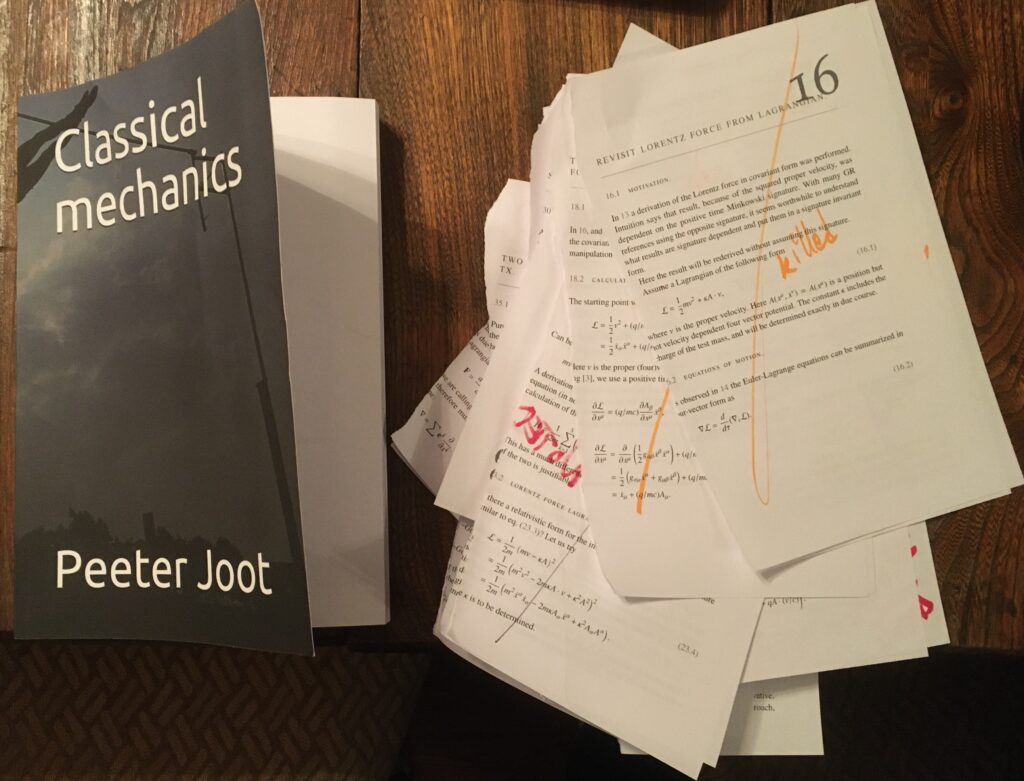We had some wall sconces in the second floor hallway. One of them sputtered and we didn’t trust it. Sofia found some nice replacements a few weeks ago, and today was installation day.
I was rather surprised when I took off the old light and found a wiring hairball. Here’s a picture after taking off (all but one of) the merretts:
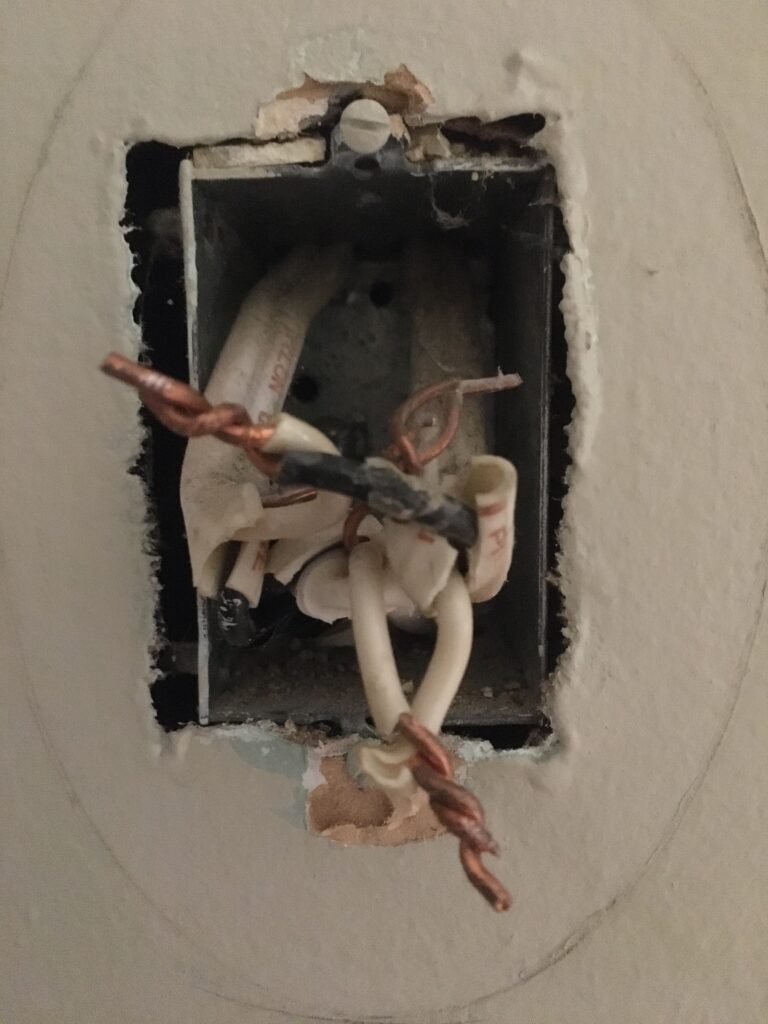
I’d never seen anything like this, not even at my last house, where the previous owner (Mr. C) never found a ground wire that he didn’t like hanging loose. You can’t really see into the back of the box in that picture, but all the wires are loose (no wiring clips securing the wires to the back of the box). none of the sheathing has been removed, and all the connections were jammed into a single tight cubic inch in an impossibly tangled mess. The grounds were all tied, but Mr C would have been proud, as none of them were connected to the ground screws at the back of the box. You can see things a bit better after a bit of unraveling:
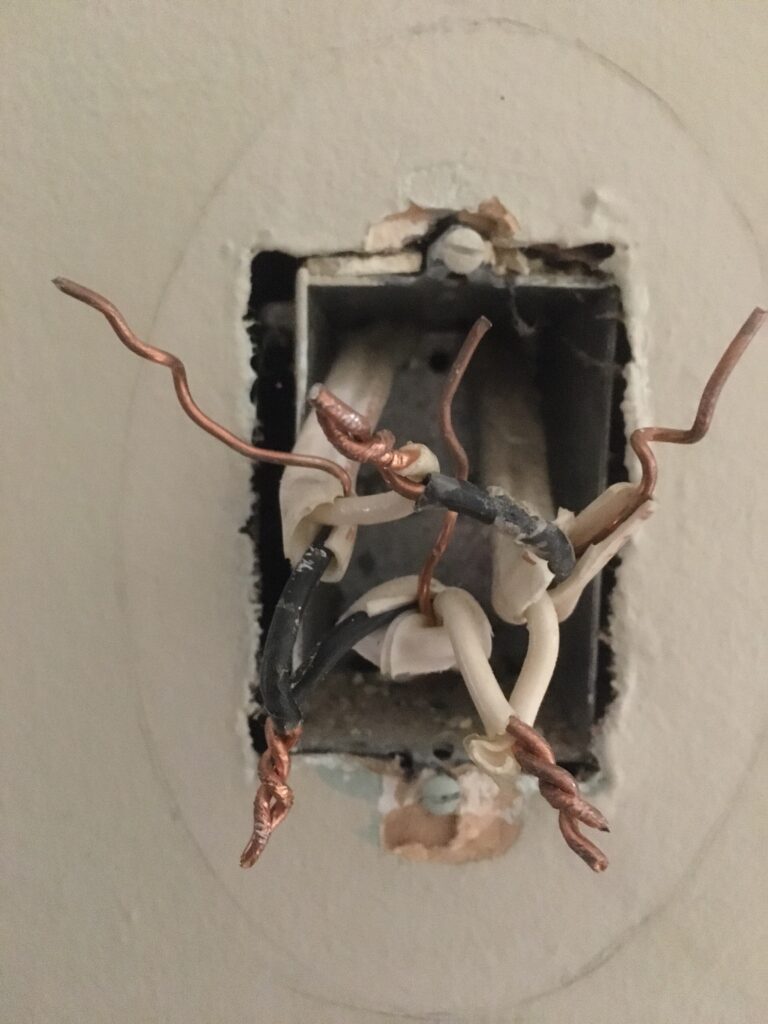
Of these wires, I hadn’t yet identified which was switch, which went to the second sconce, and which was the supply. I’m not sure about other locales, but the Ontario electrical handbook specifies that white is hot at the switch, so looking at this, I think the guess should be that the switch wire is the top left (i.e. when the switch is on, we have supply through the white, to and through the switch, and back through the black where it will power the load.) That didn’t make sense since the switch is on the right down about a foot. The only logical wire for the switch would be that bottom one. I decoupled everything so that I could test the lines (carefully) with the power back on, warning everybody in the house to keep clear:
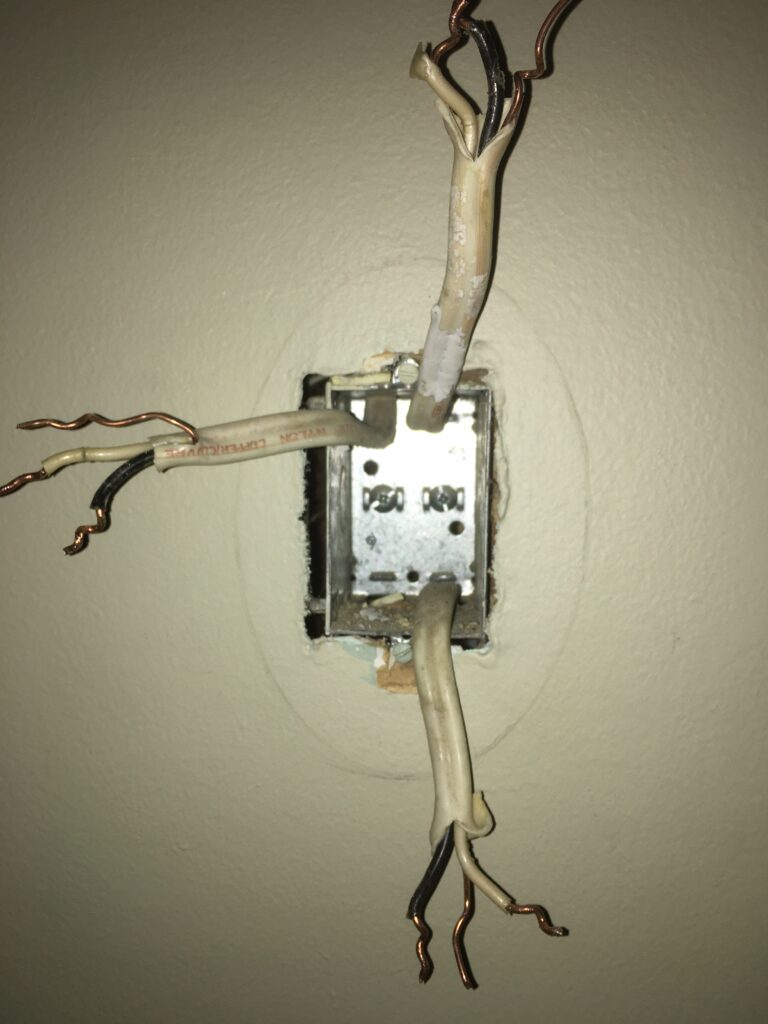
My tester showed that the top left was the supply, leaving the top right and the left as candidates for the switch and the other sconce. A couple more trips to the breaker box, and some temporary connections verified what was what, and I was ready to start reconnecting things. First step was stripping the sheathing off the wires. I couldn’t use a standard stripping tool, since everything was already in the box, but had to carefully do that with a knife:
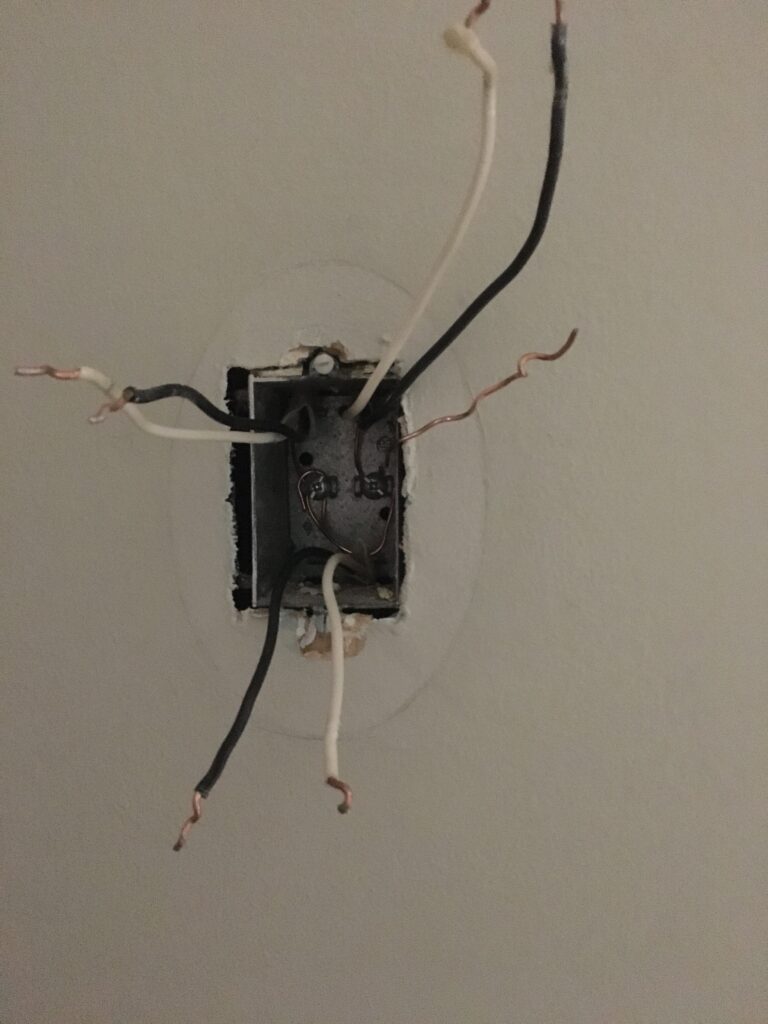
I’d never seen anybody not take the sheathing off, which was the major source of the hairball wiring. This wire was either 12 gauge or just really old, but it was very stiff and hard to handle. With all the sheathing still on, whoever wired this up originally must have had a hell of a job. I got the switch’s white connected up to the supply black, and put in some clamps at the back of the box and secured the grounds all physically to the box.
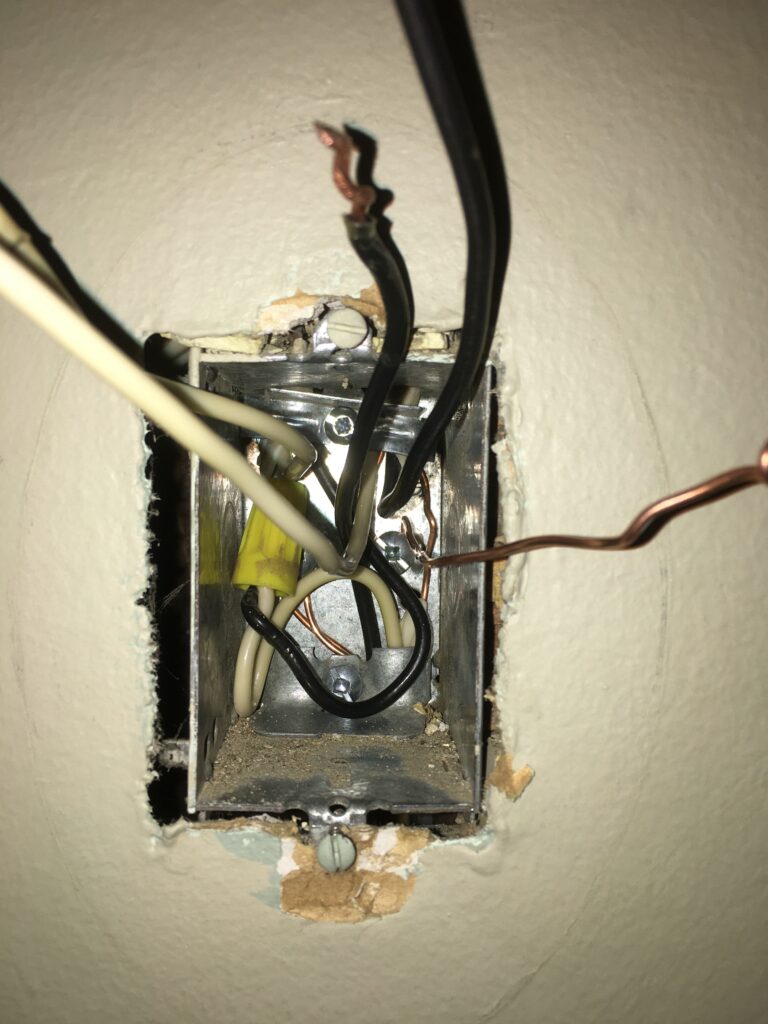
I left one ground long to potentially connect to the new light, but it turned out that the ground wire on the new light was super long, so I ended up trimming that one back and direct connecting it to the back off the box with all the rest, instead of using a merrett for the ground.
Special bonus.
It seemed prudent to open up the switch too, and found that the ghost of Mr C was haunting that too. Check out the nice floating ground lurking in the switch:
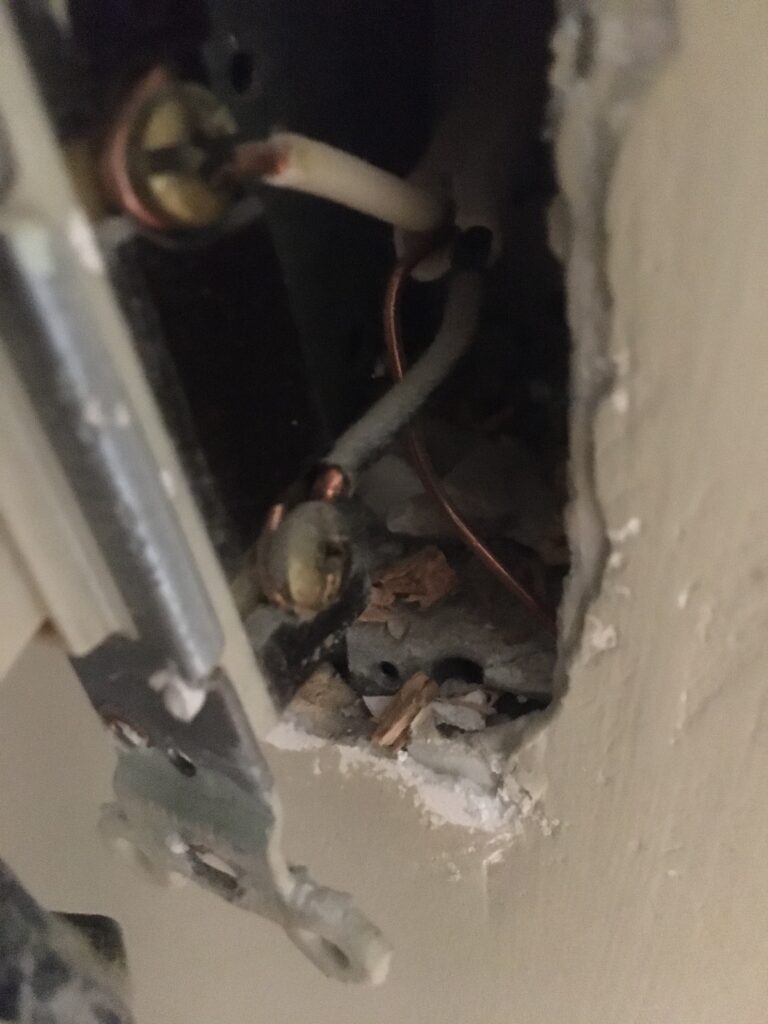
This single pole switch doesn’t have a ground screw, but it just seems really sloppy not to connect that ground to the back of the box. This wire was also not clamped, so I did that too, and put in a brand new switch while I was at it.
EDIT: Before:

After:
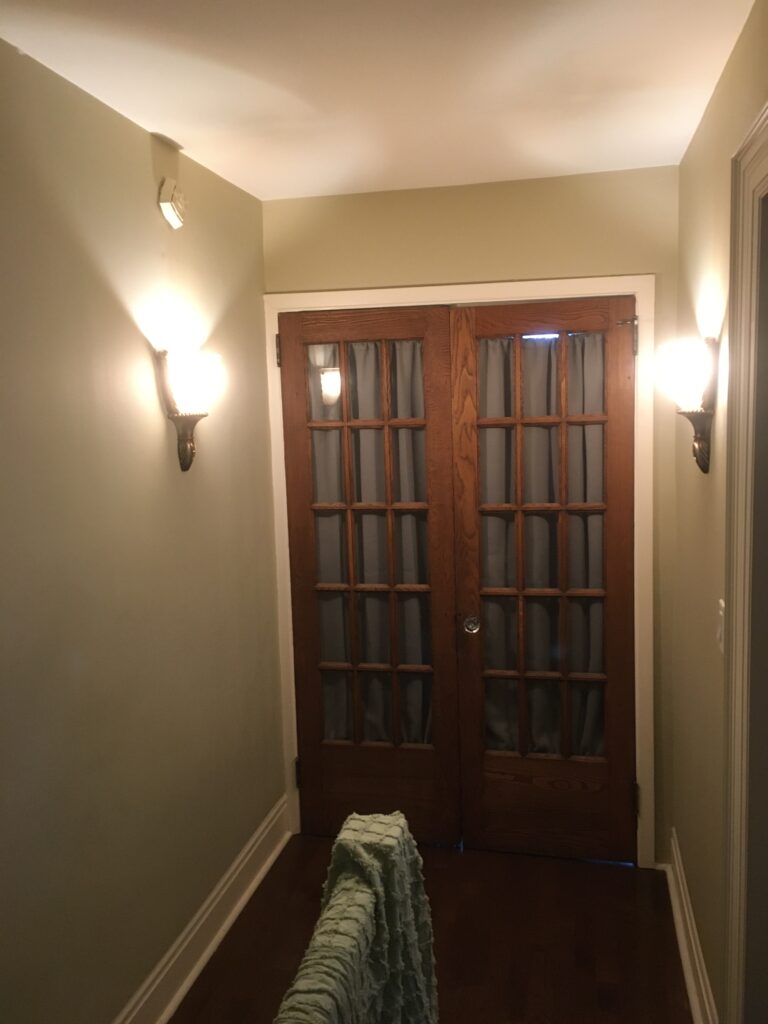

Like this:
Like Loading...
